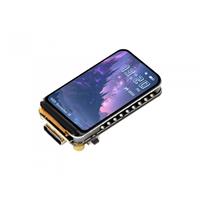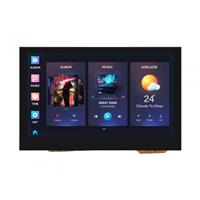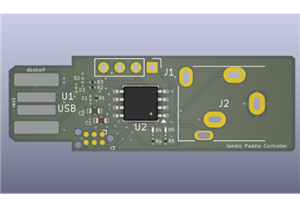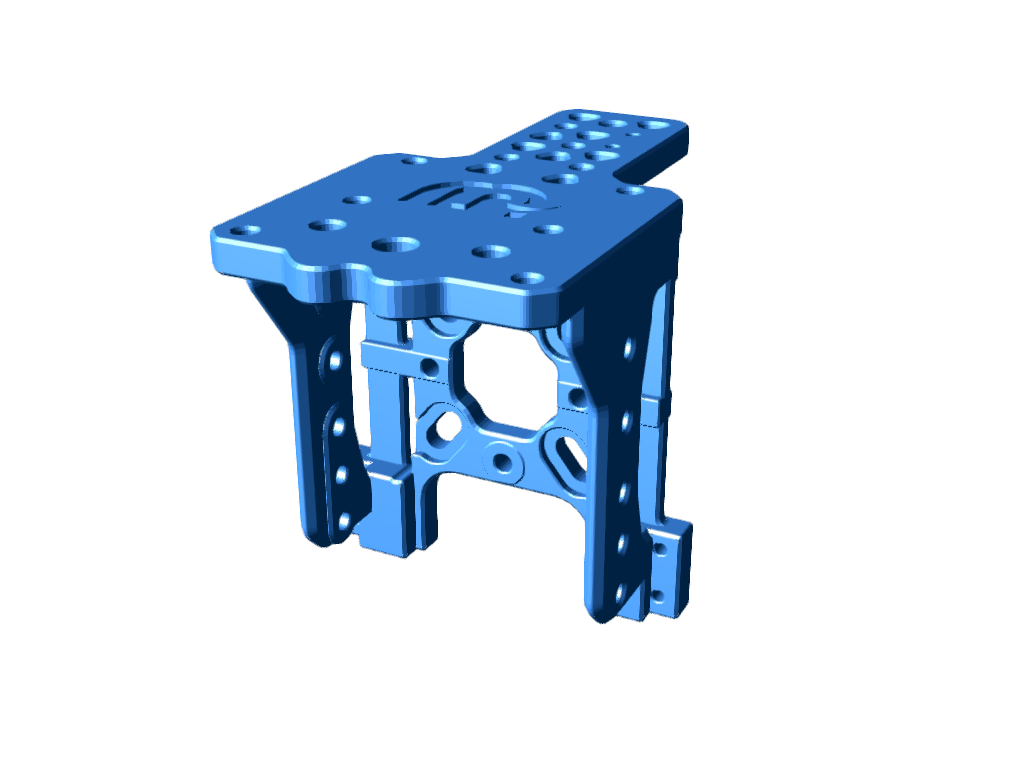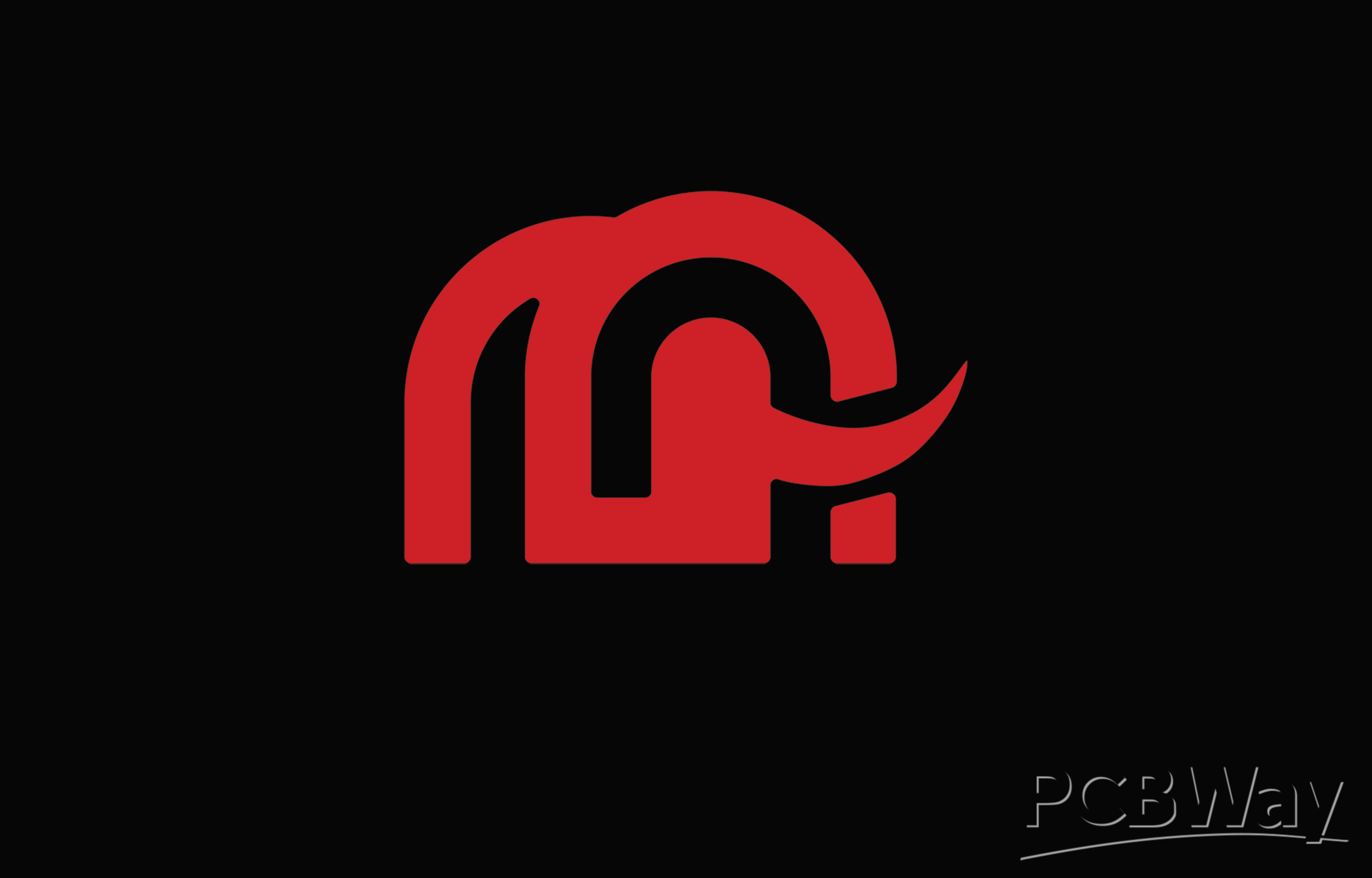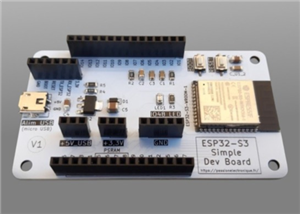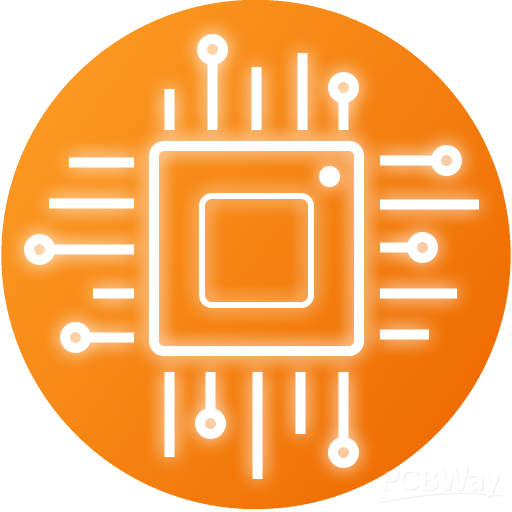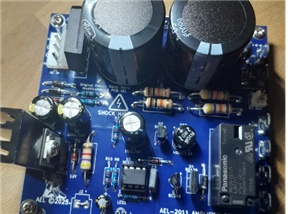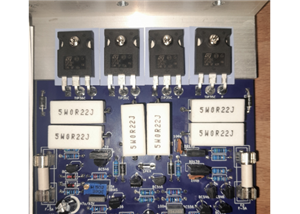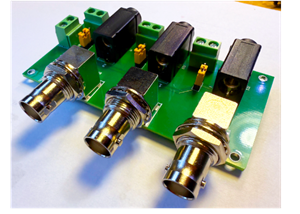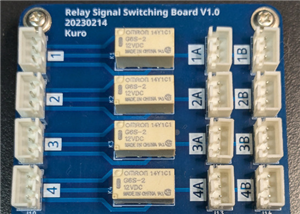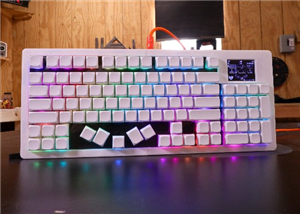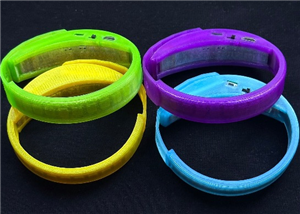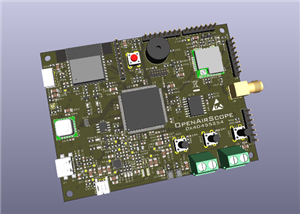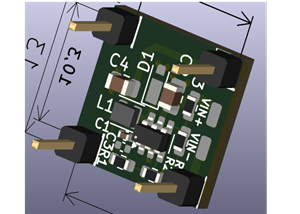
|
KiCADKicad
|
REVERSE PARKING SENSOR
Overview

A new driver has so many challenges while trying to park their car. This is the idea that made me come up with this reverse parking sensor which can alert the new driver on the situation behind the car while trying to do the parking. The system will be able to notify the driver if we got any obstacles behind the car in the process of reversing in parking lots.
The system works with the help of three LEDs which act as indicators of the distance behind the car. The system is arranged at the backside of the car. The system is powered by a 12V battery which is the same battery used in the car ignition system.
The distance between the car and any obstacle is studied by a group of well-arranged light-emitting diodes (D5 to D7 in our PCB design).
D7 will always glow when the distance between the obstacle and the car is 25cm.
When the distance is 20cm, both D6 and D7 will glow.
AT a distance of exactly 5cm, all the three LEDs will glow.
When the measured distance is more than 25cm, then all the LEDs will be off.
The Circuit Diagram

The circuit diagram is designed through the KiCAD design tool.
Placed all the symbols.
Wired them.
Moved to annotation to label the symbols.
Done electrical rules check to ensure that all the connections adhere to the electrical design rules.
Added footprints to all the symbols to ensure that they all have 3D components attached to them.
Generated the netlist which could help move the design to PCB layout windows.
Working Principle of the Sensor Circuit
The circuit is made up of two sections, the transmitter, and the receiver. The transmitter section has a NE555 timer that is used to drive the IR transmitter. Make sure you set the transmitter frequency to about 120Hz. The IR pulses that are transmitted by the transmitter are reflected by the target obstacles and are received well by the receiver.
The signals reflected are amplified by the amplifier U2. The peak detector output voltage is a replication of the distance between the bumper and the obstacle. This output voltage is delivered to inputs U3, U4, and U5 then the comparator will switch on the LEDs according to the input.
The PCB layout and Routing
After the design of the schematic, I move the design to PCB layout in the same KiCAD EDA and arrange the components in the best way, define the thickness of the tracks to 0.780 mils, and route all the available tracks. Then I add some copper pores to differentiate between the ground and the power tracks. I also add vias to connect between the top and the bottom layer.

Generating the 3D output
After the routing process, the design is converted into the three-dimensional output where the designer will be able to monitor the overall design appearances. Here, you can be able to choose the color of your board, the material to be used, and the appearance of the components. It is at this point that you will make note of the missing 3D symbols of the components and correct such errors.

Generate the manufacturing files
After checking the 3D, I have to generate the manufacturing files for ordering the design fabrication. This can be achieved through clicking on files, then fabrication outputs, and under fabrication output, generating all those files.

Under the above instruction, you will miss generating a very important fab file known as the Gerber file. To generate a Gerber file, hit at files, then plot and it will lead you to where you be able to generate the Gerber files.

Order for manufacturing
After generating all the manufacturing files, I moved to the the the PCBway home page to order for the manufacturing through the online instant quote page. Here I started by inputting the size of the board, selected the material and also the quantity of the boards, and the layers of my board.

Click calculate to get the first quote then hit on save to cart then another window will pop out where you need to submit your Gerber files for the team of experts o go through and give you a final quote.

Upload the Gerber file, then submit and wait for the completion of the quote. Make payment as required through various available payment methods and wait for the order to be delivered in seven days.
REVERSE PARKING SENSOR
*PCBWay community is a sharing platform. We are not responsible for any design issues and parameter issues (board thickness, surface finish, etc.) you choose.
- Comments(0)
- Likes(0)
- 0 USER VOTES
- YOUR VOTE 0.00 0.00
- 1
- 2
- 3
- 4
- 5
- 6
- 7
- 8
- 9
- 10
- 1
- 2
- 3
- 4
- 5
- 6
- 7
- 8
- 9
- 10
- 1
- 2
- 3
- 4
- 5
- 6
- 7
- 8
- 9
- 10
- 1
- 2
- 3
- 4
- 5
- 6
- 7
- 8
- 9
- 10
 More by Simon Mugo
More by Simon Mugo
-
 High Power Three Channel LED Driver
IntroductionI have been thinking about how to drive RGB LED patterns most simply. In my day-to-day r...
High Power Three Channel LED Driver
IntroductionI have been thinking about how to drive RGB LED patterns most simply. In my day-to-day r...
-
 433 MHz Radio Frequency Transmitter Module
IntroductionTwo devices can communicate with each other using radio frequencies and using an RF tran...
433 MHz Radio Frequency Transmitter Module
IntroductionTwo devices can communicate with each other using radio frequencies and using an RF tran...
-
 Customized Servo Motor Driver Board
IntroductionServo motors, also called rotary or linear actuators, are designed for minimal control o...
Customized Servo Motor Driver Board
IntroductionServo motors, also called rotary or linear actuators, are designed for minimal control o...
-
 Arduino Customized L298M Dual Motor Driver Module
IntroductionThe Arduino Customized L298M Dual Motor Driver Module is designed to handle high-power D...
Arduino Customized L298M Dual Motor Driver Module
IntroductionThe Arduino Customized L298M Dual Motor Driver Module is designed to handle high-power D...
-
 Overvoltage Protection Board
PrecautionBefore making use of the circuit in this design project, ensure that you first set the var...
Overvoltage Protection Board
PrecautionBefore making use of the circuit in this design project, ensure that you first set the var...
-
 Automatic Residential Lighting System Board Based on AT89C51
In our day-to-day activities, we often don't remember to switch off or on the lights in our rooms. T...
Automatic Residential Lighting System Board Based on AT89C51
In our day-to-day activities, we often don't remember to switch off or on the lights in our rooms. T...
-
 The Energy Saving Bulb Board
The traditional incandescent bulb is an energy waster and it should be removed off shelves. My new t...
The Energy Saving Bulb Board
The traditional incandescent bulb is an energy waster and it should be removed off shelves. My new t...
-
 ESP8266 MINI TEST BOARD
Design Of The SchematicThe schematic design is done in KiCAD. The process starts with finding the da...
ESP8266 MINI TEST BOARD
Design Of The SchematicThe schematic design is done in KiCAD. The process starts with finding the da...
-
 POWER SUPPLY FOR THE ESP8266
ESP8266 is a microchip of low cost that is produced by a company by the name of ESPPRESSIF stems. It...
POWER SUPPLY FOR THE ESP8266
ESP8266 is a microchip of low cost that is produced by a company by the name of ESPPRESSIF stems. It...
-
 1N4148 INCOPORATING 741 IC TEMEPERATURE SENSOR
Creating a simple temperature sensor using a diode (1N4148) and an operational amplifier (741 IC) is...
1N4148 INCOPORATING 741 IC TEMEPERATURE SENSOR
Creating a simple temperature sensor using a diode (1N4148) and an operational amplifier (741 IC) is...
-
 TSL25911 Light Sensor
IntroductionWe interact with different intensities and strengths of light in our daily activities. T...
TSL25911 Light Sensor
IntroductionWe interact with different intensities and strengths of light in our daily activities. T...
-
 SIM800 GPS module
ElevatorThis project demonstrates how you can develop various GPS/ GPRS and SMS capability developme...
SIM800 GPS module
ElevatorThis project demonstrates how you can develop various GPS/ GPRS and SMS capability developme...
-
 nRF51822 Mini Evaluation Board
IntroductionDemand for development and evaluation boards the world over has increased. Due to such d...
nRF51822 Mini Evaluation Board
IntroductionDemand for development and evaluation boards the world over has increased. Due to such d...
-
 Customized LM393D Soil Moisture Sensor Board
ElevatorThe project is good at converting analog signals from the soil to digital signals for soil m...
Customized LM393D Soil Moisture Sensor Board
ElevatorThe project is good at converting analog signals from the soil to digital signals for soil m...
-
 PAM8403 Amplifier Module
IntroductionThis is a simple project for improving your musical or audio entertainment by powering y...
PAM8403 Amplifier Module
IntroductionThis is a simple project for improving your musical or audio entertainment by powering y...
-
 741 IC Bass Booster
IntroductionIn this project, we are going to design a bass booster circuit using the 741 IC. This is...
741 IC Bass Booster
IntroductionIn this project, we are going to design a bass booster circuit using the 741 IC. This is...
-
 LM317 AND LM337 ADJUSTABLE POWER SUPPLY CIRCUIT BOARD
IntroductionThe LM317/LM337 symmetrical power supply circuit is an electronic setup for meeting the ...
LM317 AND LM337 ADJUSTABLE POWER SUPPLY CIRCUIT BOARD
IntroductionThe LM317/LM337 symmetrical power supply circuit is an electronic setup for meeting the ...
-
 230V AC to 1.5V DC PCB for Your Application
IntroductionA power management integrated circuit (PMIC) is utilized to supply the necessary power t...
230V AC to 1.5V DC PCB for Your Application
IntroductionA power management integrated circuit (PMIC) is utilized to supply the necessary power t...
-
-
mammoth-3D SLM Voron Toolhead – Manual Drill & Tap Edition
269 0 0 -
-
AEL-2011 Power Supply Module
795 0 2 -
AEL-2011 50W Power Amplifier
661 0 2 -
-
-
Custom Mechanical Keyboard
854 0 0 -
Tester for Touch Screen Digitizer without using microcontroller
474 2 2 -
Audio reactive glow LED wristband/bracelet with NFC / RFID-Tags
424 0 1 -
-


























